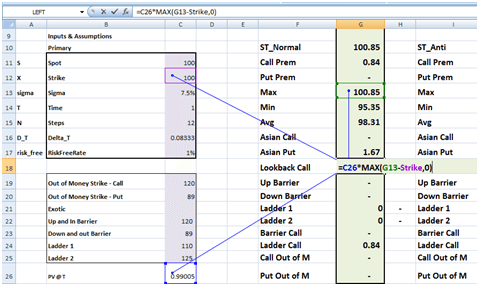Actuaries are boring. Musings on actuarial careers
One of my favorite interview question that throws candidates into all kinds of hissy fits is:
“What do you think you will be doing every day once you start working at our firm. You walk in the door on day one in the morning and then what? ”
After asking this question for over two decades here is the answer I would have crafted with perfect hindsight.
Numbers and Data
The common theme in my life work wise has been numbers and data. If there is one thing that I can count on when I look towards the future as an actuary it would be doing something with numbers and data.
There is a reason for that. As a rule we are good with numbers. Not equations or theories or proofs. Just numbers. Although in the course of our education we end up studying hundreds of equations, theorems and proofs but in the end it all boils downs to numbers. We pick this profession because we are good with them. We enjoy our work because we enjoy working with them.
Our is not the only profession with a stranglehold on numbers. There are many others but we specialize in distant numbers. Numbers that are in the future or numbers that have not been realized as yet. The biggest problem with the future is that it is uncertain. Although actuaries are not magicians or palm readers they understand uncertainty (supposedly better than the general population). They are trained to evaluate uncertain future events and their financial impact.
Data though is a completely separate story. It needs to be reviewed, cleaned and tested. Sometime its unreliability only becomes visible when you have finished running your models. Quite often you have to chase the client for it and engagements get delayed because it is not in the right format or is missing crucial elements. Sometimes it does not exist and you literally have to pick up the pieces from the floor.
Unlike models and numbers, data is generally not exciting. Yet it forms the foundation for actuarial work and is commonly used as a filtering tool by the firms. If you can survive a few months of servicing data with grace, you have the discipline and the persistency required to pass the exams. As an outsider you will not be faulted if you assume that we bore candidates to death with data in the first few months and only bring out the exciting stuff once they have proven that they have safe hands or they have left.
While the same candidate testing model works very well on Sales and Trading floors and Investment Banking internships, starting actuarial compensation doesn’t compare well with Wall Street and Fleet Street salaries. There is also something to be said for the operating environment. Markets are exciting and interesting and making money off a trade feeds you with instant gratification. That excitement brushes off traders and trading floors. And you don’t have to wait long for the payoff. The most extended investment banking mandates also close within a year.
Data, on the other hand is boring and sometimes, unfortunately, so are actuaries. There, I have finally said it.
But let me qualify that statement. There is a reason for that boredom. While a short term move on half a billion dollar position may generate a 51% return on invested capital , an actuary will not get excited by the trade, the move or the return. Our exams, our curriculum, our education, our work and our peers train us from day one to take the long view. Shorter term focus is something that we don’t enjoy, we actually find it (looking for the right word), “boring”. So the challenge in actuarial recruiting is to find candidate that do not cause a phase shift or temporal mismatch. If you combine the long view supervisor with the short view intern you are courting disaster, chaos and heartache.
On Building Models

You could possibly ask, “But what about models? Don’t you build models?” Occasionally yes when something new comes along. However in the traditional actuarial consulting world a large number of models and frameworks have already been built and tested. While there are opportunities to tweak and improve things, in most instances you take client data, feed it to the model, review the results and write your actuarial opinion. If you are senior and experienced enough you may tweak the model. If you have just started you are consigned to the doom and gloom associated with chasing data.
The non-traditional side is different. Here all you have is first principles, incomplete data sets and non-functional models. Enterprise risk, portfolio management, capital allocation and emerging markets are four areas where there is still a great deal of model building work going on (Risk in Emerging Markets – a friendly conversation). But once again you get to the model building part once you have proven your ability to handle data with true respect. If you don’t survive that phase, you won’t see models being built, only models at work.
My first two years were complete focused on working with employee benefits data, tweaking and running the valuation system to calculate defined benefit liabilities for employee benefit plans. The question we had to answer dealt with how much money was needed today to fund promises made for future benefits. Our benefit valuation work (Benefit valuation a simple example) relied heavily on commutation functions (Introduction to Commutation Functions). It sounds exciting but in practice it meant reviewing trust deeds and rules (legal documents) and changing a few lines of code in the valuation software to run the right benefit structure. The actuarial opinions were no different. Rather than code we changed the benefit annexures and the numerical disclosures.
I escaped at the end of my second year to the systems and implementation consulting world because I couldn’t see myself doing benefits valuation for the rest of my life. The phase mismatch on our desk would have lead to an implosion and a core meltdown if I had stayed. My temporal focus was out of alignment with the rest of the floor.
But the journey that followed led to a completely different version of the actuarial world. If the first two years were black and white and grey, the next twenty were in high definition color and stereo sound.
It was work that still revolved around data, numbers and models but with pit stops at Fleet Street, Broadway (ask me about it), Pacific ocean beaches, Back office startups, exotic valuation opinions (and a few choice exotic locations), torn cartilages, technology policy and governance in developing world, wholesale corruption of young minds and African safaris.
Sometimes all it takes to change your frame of reference (and your temporal focus) is the right choice of words. Like I said, Actuaries are boring.
There you go. There is your answer. So the next time you come in for an interview at our shop, I hope you would have read The questions I get asked as an actuary as well as Models at work – I am not a Quant. Fair warning – since the answer is now out there, the hissy fit question will most likely change.
Update 2016: When I originally wrote these lines, I was only answering a question on Quora on actuarial careers. Didn’t realize that this page would become one of the most popular pages on our site. It’s only fair that I add some additional context that I have sprouted since then. It’s a mix bag most of it written at weak moments in hotel rooms in strange cities, late at night. You are more than welcome to ignore it or read at your own risk.
- Mathematics or Computer Science. Why you should do things that scare you?
- Confessions from a hotel room at stroke of midnight. I wonder about career choices I made.
- The Zen of building risk models. A model builder speaks.
- A founder’s tale. My startup adventures consolidated in one location.
- Turning boys into men. Or why you should run the 400m dash once in your life.


